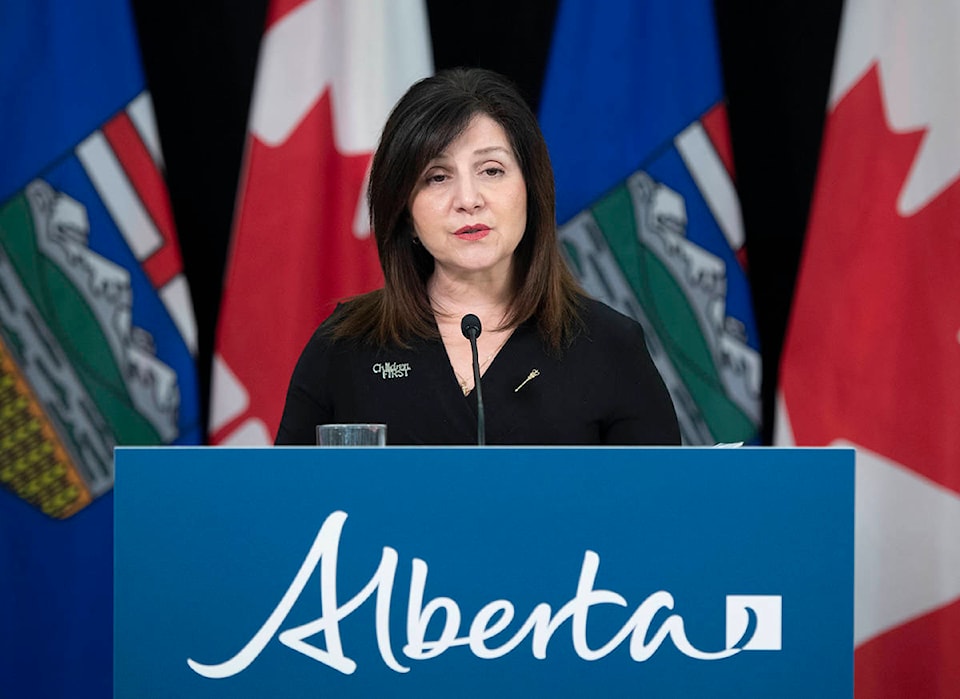In-class learning will return on Tuesday because the number of students and staff self-isolating and testing positive for COVID-19 have fallen dramatically, said Education Minister Adriana LaGrange on Wednesday.
Prior to schools being shut down and the return of remote learning two weeks ago 12 per cent of teachers and other staff were self-isolating. There were problems finding enough substitute teachers and even school bus drivers.
“We are now down to 2.2 per cent,” said LaGrange, of the self-isolation numbers.
When schools were closed there were 6,000 students and staff testing positive for COVID, a number that is now down to just over 1,000.
“Taking all these metrics into consideration, that is how we came to the decision (to re-open).”
READ MORE:
Alberta students returning to school on May 25
In-class learning will return for all kindergarten to Grade 12 students in Alberta, except in the Municipality of Wood Buffalo, which includes Fort McMurray, where case numbers have not been falling as fast as elsewhere in the province.
Alberta’s chief medical officer of health Dr. Deena Hinshaw said she understands that many parents are anxious about their children returning to class, but she assured that it is safe.
“We have seen a sharp decline in the cases in school-age children in Alberta in recent weeks,” she said. “From an average of 60 new cases a day for every 100,000 children and youth in early May, we are now down to about 31 cases per 100,000 cases.”
Hinshaw said cases in school-age children rise and fall in connection with rates of community transmission and are not directly linked to whether children are in school or not.
Last December, when junior and high school students remained home, but elementary students continued going to school, infection rates for both groups fell at the same pace.
More than half of students over 12 have had first shot
Hinshaw said extracurricular activities will continue to be restricted and schools will also follow previous health protocols including, mask wearing, maintaining cohorts, screening and altering seating arrangements. Rapid screening has also been rolled out in schools in Edmonton, Calgary, Lethbridge and Medicine Hat.
“But with community transmission numbers falling and with additional people every day getting vaccinated the protocols we’ve had in place, plus the rapid screening approach, all of those things together are making our schools as safe or safer than they have ever been.”
Hinshaw was asked why schools are reopening if closing them appeared to be getting results in bringing cases down.
“It’s important to remember that COVID-19 and the risks that it brings with it are one aspect of health risks,” she said. “Their immediate health as well as their long-term health is directly impacted by their ability to access the educational and developmental opportunities that learning provides.”
Alberta Teachers’ Association president Jason Schilling said the back and forth on in-class learning has been tough on teachers as well as students.
“So, there are a little bit of mixed emotions with that and a heavy heart because teachers don’t want to finish off the school year with their students online but they also recognize that we still have a very high positivity rate in the community in terms of COVID spread.”
Teachers question what has changed that makes returning to school safe now.
“There have been no dramatic changes to the plan that I’ve seen so far or heard from government on how they’re going to mitigate the spread of COVID within schools,” he said.
In the last two weeks, the number of school-age children testing positive has actually grown, he said.
“Teachers and their students are sort of tired of this flipping back and forth between in-person and online delivery,” he said.
Teachers and their association want to see the government ensure that school protocols are being followed closely. Class sizes are also too big in many cases to do the kind of social distancing recommended.
More needs to be done to ensure substitute teachers have the support they need, including financial security, if they must self-isolate and can’t return to classes.
“They don’t have the same kind of income security and benefits that other people have.”
